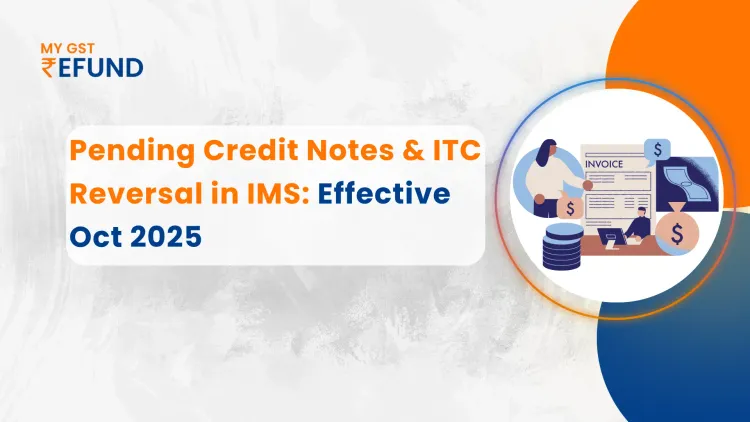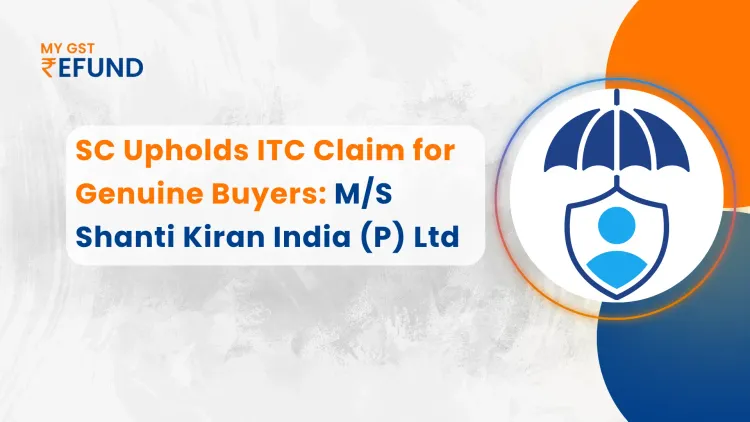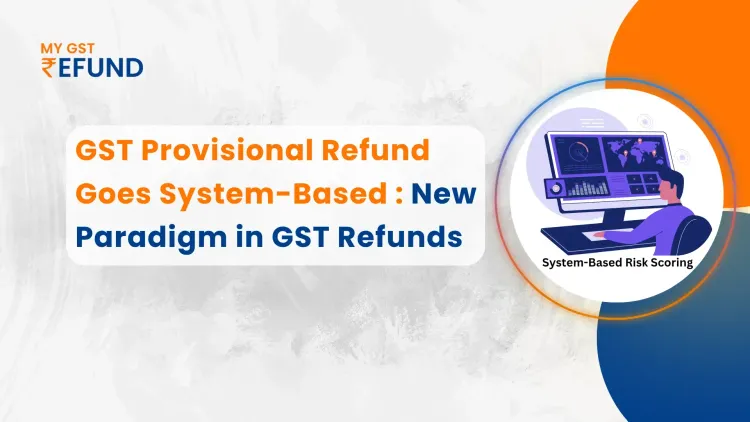India's GST collection hits Rs 1.85 lakh cr in June 2025
Published on: Fri Jul 11 2025
Bio (Reveal/Hide)

India's GST collection rises 9.4% YoY to Rs ₹22.08 lakh crore
With an amount of ₹22.08 lakh crore raised into the GST account during June 2025, an increase of 9.4 percent from June 2024, the Goods and Services Tax (GST) collection in India remains one of the highest earners.
As a whole, these points aim to improve GST compliance across industries and the persistence of the economic recovery.
For creating revenue, the Goods and Services Tax (GST) in India has a dual structure, with both the federal government and individual states charging an equal amount of GST from a similar base of taxation.
The federal government, as per this model, levies a Goods and Services Tax (CGST), states levy their own Goods and Services Tax (SGST), and finally, the states and the federal government combine efforts to levy an Integrated
This methodology ensures that the country's tax dollars are split evenly between the two branches of the government.
Highlights of the June 2025 GST Collection
Total Collection: ₹1.85 lakh crore
| YoY Growth | 6.2% |
| CGST | ₹34,733 crore |
| SGST | ₹43,499 crore |
| IGST | ₹99,901 crore (including ₹40,000 crore on imports) |
| Cess | ₹7,934 crore |
After regular settlements, the center received ₹72,939 crore, while states received ₹74,785 crore in June 2025.
India Launches a New GST Drive to Increase Tax Collections?
India's GST revenue crossed the all-time high of ₹22.08 lakh crore during FY25, up 9.4% from a year ago, averaging ₹1.84 lakh crore monthly.
This boost is facilitated by almost doubling taxpayer registrations (65 lakh to 1.51 crore), digital technologies such as e‑invoicing/e‑way bills, and the June 2025 e‑fraud evasion compliance drive.
June’s Dip: Cause for Concern?
Compared with April and May, the lower June number reflects a normalization that would have occurred after the fiscal year ended. April appears to have hit a high due to the payment of final excise and compliance inflow. Although ease grew in collections, the YoY growth of 6.2 % is indicative of a strengthened revenue base. Whereas the number of active GST taxpayers rose to over 1.51 crore, the gross GST collections hit 22.08 lakh crore in 2024-25, up 9.4% from last year.
What will be the new future of GST in India?
Since 2014, Prime Minister Narendra Modi proclaimed the Startup India campaign in 2016 to boost entrepreneurship in India. This helps a lot for new startups to open in the ecosystem. GST in India is evolving into a completely automated, real-time, secure compliance system, supported by AI, blockchain, and regulatory digitization. This evolution promises stronger transparency, fewer errors, and faster filings, ushering India’s digital economy into a new era.
By 2030, the overall tax-tech market, including GST solutions, will grow from ~$18 bn to ~$62 bn by 2034 (~13% per annum CAGR).
Source- https://www.ey.com/en_in/media/podcasts/8-years-of-gst-achievements-challenges-and-future-of-tax-reform
What is the New GST Plan 2025–2026?
From January 1, 2025, e-Way Bills in India will only be issued against documents dated July 5, 2024, or later; pre-July invoices will no longer be valid. Additionally, multi-factor authentication (MFA) for accessing the E-Way Bill and e-Invoice portals is being implemented in phases:
| Jan 1, 2025 | Required for businesses with ₹20 cr+ turnover |
| Feb 1, 2025 | Applies to those with ₹5 cr+ turnover |
| Apr 1, 2025 | Applicable to all taxpayers. |
These reforms enhance India's increasing digital public infrastructure, comprising Aadhaar, UPI, and GST networks. Such infrastructure now constitutes about 11.7% of GDP, which can go up to nearly 20% by 2029–30. With more robust digital systems, GDP every year could get an incremental boost of 2.9–4.2% by 2030.
This evolution empowers SMEs and larger corporations with instruments to minimize fraud, simplify logistics, and increase productivity, potentially making efficiency better and digital transactions much larger. The result: a more transparent, resilient trade ecosystem that supports India’s ambition toward an $8 trillion economy by 2030.
The Indian types of GST rates and structure:
The main rates of the GST that are currently set on any casual taxpayers include 0% (nil-rated), 5%, 12%, 18%, and 28%. Some of the less-imposed GST rates include 3 percent and 0.25 percent.
Moreover, persons to be subjected to GST include those who pay nominal or minimum rates, like 1.5 percent or 5 or 6 percent of their turnover. GST also has a concept of TDS and TCS, where the rates are 2% and 0.5%, respectively (1% till 9th July 2024).
There is a list of additional GST rates (over the list of above GST rates) imposed by the GST law on the sale of certain goods like cigarettes, tobacco, aerated water, petrol, and motor vehicles, whose rates differ considerably, i.e., ranging between 1 and 204%.
India Launches GST Compliance Drive Targeting Informal Sectors
As a step to expand the tax base, the Indian government initiated a nationwide GST enforcement drive in June 2025. The drive targets sectors usually beyond the reach of formal taxation, such as street food vendors, small retailers, local service providers, and popular marketplaces and commercial areas.
Top-Performing States
Maharashtra tops overall GST collection, owing to its good industrial and service-based economy. In the meantime, the state of Uttar Pradesh has broken the 1 million GST registrations record in India. Other leading contributors are Karnataka, Gujarat, and Tamil Nadu, which also have more than 1 million registered entities each.
Record GST Collections & Rising Taxpayers
India broke its record by collecting ₹2.36 lakh crore in GST in April 2025, up by a 12.6% year-on-year increase. This growth is fueled by
- 2.5 million+ new GST registrations in FY25
- Strong consumption and production trends
- Enhanced compliance of new as well as existing taxpayers
Along with this, GST registrations have exceeded 15 million, reflecting the growing formal economy and the success of technology-led enforcement.
Conclusion
India's GST is now in the chain of transformation, which is built around the tech automation, real-time verification, and digital security, all supported by e-invoicing and MFA. These changes not only improve compliance but also strengthen India's digital public infrastructure, underpinning economic growth, increasing transparency and efficiency, and placing GST as a building block for a 20%+ digital GDP share by 2030.
How MyGSTRefund Assists Companies in Claiming Quicker Refunds
MyGSTRefund is an automated GST refund portal that facilitates Indian businesses claiming refunds simply and transparently.
Maximizing ITC Claims with Expert Automation
Complex paperwork and changing GST standards are some of the greatest problems. Businesses that are struggling because they cannot claim complete Input Tax Credit (ITC). MyGSTRefund provides AI-supported technology tools like the GST Refund Calculator, HSN Validator, and professional reviewing mechanisms so that businesses are not deprived of the ITC they are entitled to. The site allows it to maximize its valid claims by cross-checking purchase records, tax remittances, and invoices, and is particularly important to exporters with zero-rated supplies.
Simplifying and Speeding Up GST Refunds
Users who are eligible to use it are exporters, companies whose duty pattern is inverted, and those where there is excessive TDS/TCS collection. The platform has features such as a GST Refund Calculator, proficient filing assistance, and live tracking to make the refund model much easier.
How MyGSTRefund Resolves The Problem
MyGST Refund appears as a brand of Fintaxicorn Solution Pvt Ltd, which works on “Tax Technology Solutions” and has processed over ₹10 Cr in refunds within an average of less than 60 days.
In short, MyGST Refund is your single-stop, tech-enabled companion to achieve the highest GST refund for businesses.
MyGSTRefund does away with waiting time, lost payments, and working GST refund delays through documentation, error advising, and follow-ups with the GST department, maintaining compliance and increasing the likelihood of recovery of frozen working capital without ever having to pay any fee for refunding, as it follows a No-Refund, No-Fee Policy System.
Source- https://www.pib.gov.in/
Related Posts





